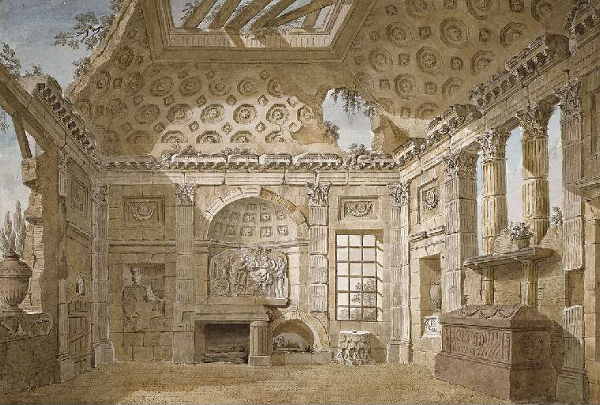
In 1766, French draughtsman Charles-Louis Clérisseau painted a room in the Trinità dei Monti convent in Rome to resemble a ruin, complete with a fallen ceiling and broken walls. A table was disguised as a damaged cornice, a desk as a shattered sarcophagus, and the kennel of the monks’ dog became a toppled urn.
“Building ruins in Rome might seem a waste of effort,” writes Robert Harbison in The Built, the Unbuilt, and the Unbuildable, “but the point was that one could comfortably inhabit this one, getting all the beauty of disorder without the inconvenience.”
